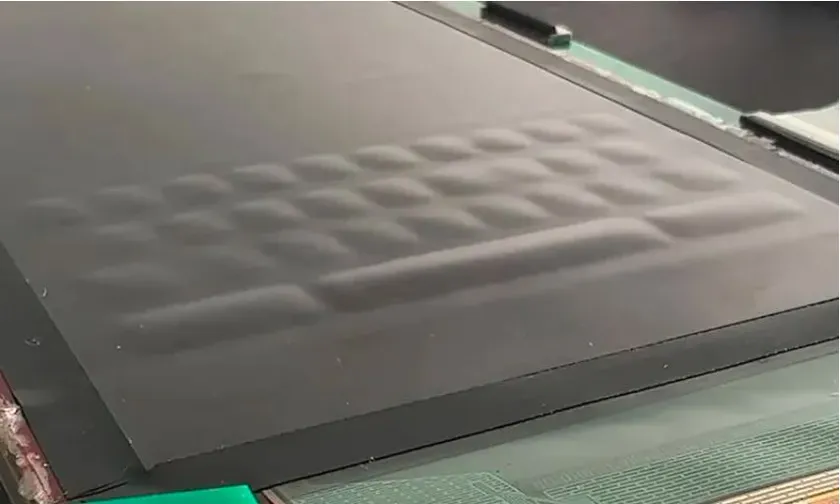Carnegie Mellon University’s Future Interfaces Group has developed a new technology called “Flat Panel Haptics,” which can create protruding screen areas on demand to enhance touchscreen interactions. The researchers, Craig Shultz and Chris Harrison have used Embedded Electroosmotic Pumps (EEOPs) to fill screen sections with fluid and create tactile buttons that stick out from the flat surface of a touchscreen device by as much as 1.5mm. This technology adds a new tactile dimension for pop-up media controls, keyboards, and virtual gamepads, making them much less frustrating for activities that require rapid response times, such as typing and playing games.
How Flat Panel Haptics Works: Embedded Electroosmotic Pumps (EEOPs)
EEOPs are arrays of fluid pumps built into a thin actuation layer under an OLED panel, creating a self-contained, lightweight, and versatile system that offers up to 5mm of displacement. The fluid fills a section of the EEOP layer when an onscreen element requires a pop-up button, and the OLED panel on top bends to take that shape. The result is a “button” that sticks out from the flat surface, providing tactile feedback. Filling each area takes about one second, and the pop-up buttons feel solid to touch.
Related: How A Touchscreen Glass Keyboard Works
Enhancing Touchscreen Interactions: Pop-Up Buttons on Demand
The research team believes that this technology is a tactile equivalent to the way pixels work on displays. Just as LCD pixels modulate light from a common backlight, EEOPs draw from a common fluid reservoir and selectively modulate hydraulic pressure in and out of haptic cells. While the pop-up buttons in their current form have a limited scope of shapes and sizes, reducing their versatility, the team believes that applying the same principle to a layer with more and smaller pop-up buttons could open new doors for user interaction, including easier onscreen typing, gaming, in-car controls and even accessibility features like onscreen braille.
Advantages of Flat Panel Haptics
The thinness, lightness, and versatility of FIG’s Flat Panel Haptics technology set it apart from similar attempts, according to the research team. The technology could provide an improved user experience for a range of touch-enabled devices and offer a new level of interaction that mimics the tactile feedback of a hardware keyboard or a physical controller.
Source: Engadget





